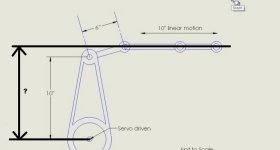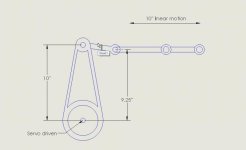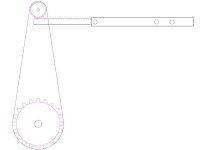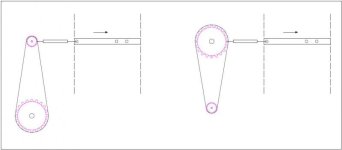Daniel_LeRoy
Lifetime Supporting Member
Hello Everyone!
I have a motion application I need some help with. Here is a sketch:

I need to be able to control the speed of the linear motion in feet per second, and I am having trouble with the math. I have tried searching through here and I know its possible.
The linear motion just goes back and forth and need to be able to adjust the speed on the fly.
I am using an AllenBradley 5069-L330ERM with Mitsubishi J4-TM servos.
Thanks in advance!
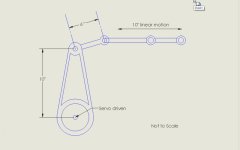
I have a motion application I need some help with. Here is a sketch:

I need to be able to control the speed of the linear motion in feet per second, and I am having trouble with the math. I have tried searching through here and I know its possible.
The linear motion just goes back and forth and need to be able to adjust the speed on the fly.
I am using an AllenBradley 5069-L330ERM with Mitsubishi J4-TM servos.
Thanks in advance!





